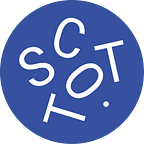LECTURE | restaurant final presentation
--
Okedoky…So here is how I would like you all to present upon completion of this project. You will be submitting your final designs on your Medium and similar fashion to what I am post here.
PROCESS
I began my process but trying to combine a worthwhile restaurant concept with a young and discerning audience while keeping in mind that my product needs to be of high-quality, locally-sourced, and health-conscious.
I began a little research into what intrigued me, personally. I love grain bowls and felt that their popularity seems to be on the rise. To further this upward trend, I chose to incorporate sour beers. Now, while I was researching I started to make a connection between the name of the plant that produces Quinoa and a style of sour beer. The plant is called a Goosefoot and the style of beer is a Gose.
- Goosefoot Quinoa / Native to the Andean region of South America, it’s the most economically significant species and is grown commercially for its nutritious seeds.
- Gose Beer / A fermented beer that originated in Goslar, Germany. it is usually brewed with malted wheat. Dominant flavors include lemon sourness and strong saltiness.
Goosefoot Quinoa + Gose Beer = GOSEFOOT (Genius, eh!?)
CONCEPT
Fast Casual restaurant with a very clean and modern aesthetic. The concept centers around locally-sourced organic ingredients with a beverage focus on sour craft beers.
Much like ya’ll, I began to do some visual research and pulled together a down and dirty, yet still organized and neat mood board. A place to gather all your thoughts and this benefits the client because it gives them a visual reference. Imagery, color, typography, patterns and textures, design elements, etc. You may choose to include (and is encouraged) your sketches here as well.
From there, I began to doodle and begin to gather some visual elements. I felt like a minimal brand could benefit from a simple custom wordmark with a couple accompanying alternative marks.
My wordmark is a completely custom typeface created from scratch to reflect the ingredients and niche concept. I wanted to be different yet legible. Uncommon yet identifiable. My taglines were one part informational and one part fun.
- sours + grains
- Anything Gose.
Since quinoa is a grain that literally looks like little dots, I chose to create a few toolkit items like a bowl made from a dot pattern as well as a bottle. Items that don’t necessarily need to be shown with the name, but are more or less descriptions of offerings.
This is where you begin to fill in the blanks and start refining. Color, spacing, kerning, etc. All the things we have learned to this point should be considered.
How’s it look on your darkest value from your color palette? How’s it look in one color on dark, one color on light. Remember to test these things in the very beginning.
I want you all to document your typefaces and color palettes in this fashion.
- Typeface name, a sample of upper and lowercase, point sizes, etc. How you set this up is up to you.
- Your color palette should have a sampling of color with it’s corresponding cmyk, rgb, hex, and if you want PMS color.
Per our last project, you need to show me you have a grasp of clearspace and you are NOT breaking it anywhere in this presentation. Remember, if you are making a rule and you’re breaking it, what does it say about you? The more clearspace the better, but don’t go overboard.
For my two physical elements. I chose to put together a menu and a coaster that doubles as an ordering device for drinks. The beer menu is in paper form but also as an interactive element on the coaster. I threw in a simple business card design as well.
Notice that my typeface is used for all body copy, my alternate marks are coming in to play here on the menu and coaster back. This is where your aesthetic comes into play. A logo that works on its own is one thing, but how does it interact with the space that it is given. Remember, I mentioned before…how and where is this gonna live in the end?
For presentation, I wanna see your designs neatly organized and uploaded as flat art so they can be reviewed.
So, since class has taken a turn to the good ol’ interweb…I am going to allow digital mockups. Physical mockups were the aim but that is going to be hard to police. You still need to lay things out full size and pay attention to borders, gutters, margins, etc. This is a decent example of a professional and portfolio-worthy mockup. Make sure it makes sense with your brand!
